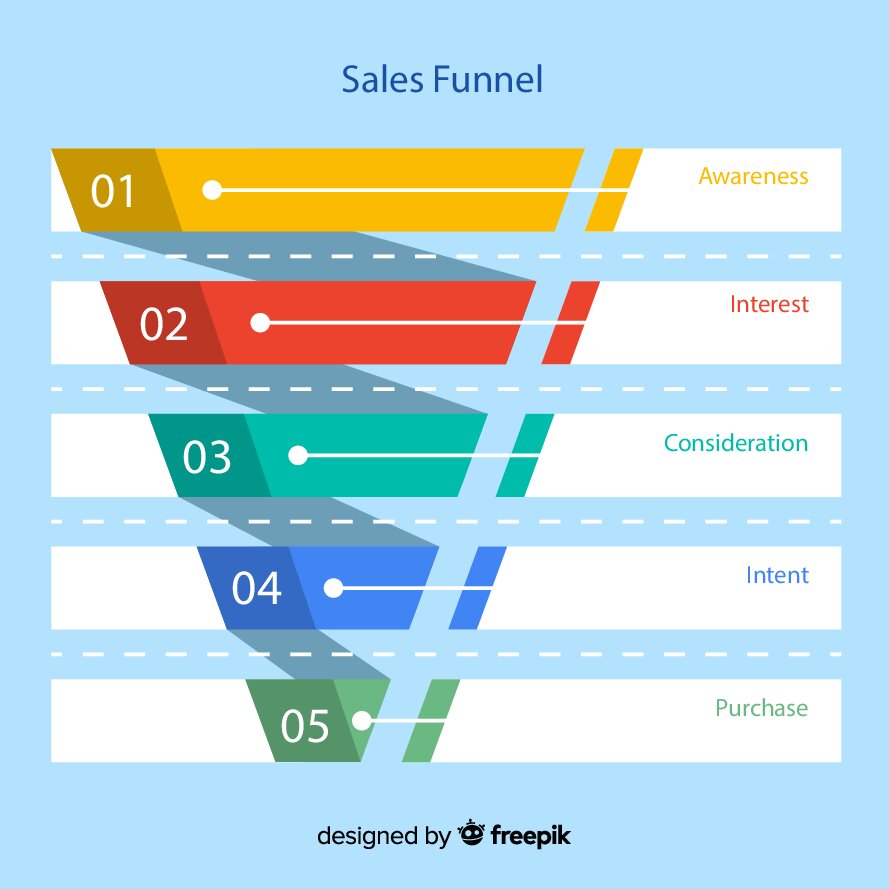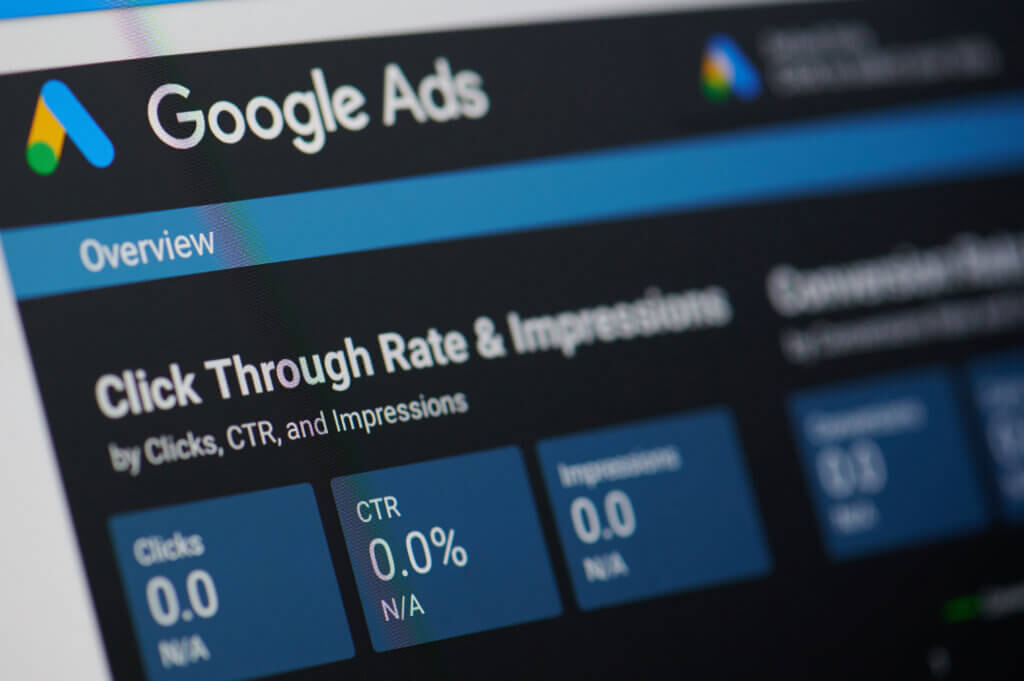Google Ads is a powerful tool that allows companies to drive relevant traffic to their website. It can be used by anyone with a website.
Within Google Ads, there are four main methods of advertising:
- Search
- Display
- Video
- Shopping
Each one of these methods requires significantly different skills in order to use. They all, however, use the same principles when it comes to making a profit. I will not be going over how to set up a Google Ads account. If you need to set up your Google Ads account for the first time, view this article by disruptive advertising, and then come back. This article will go over the numbers you need to know and the math that will allow you to guarantee a positive return from your Google Ads account.
Advertising Goals
Google Ads is helpful for any step along the sales funnel. This funnel has stages from building brand awareness to driving purchases.

Today we’ll focus on the lowest part of the funnel, the purchase. For Google Ads this means generating leads in the form of form fills and phone calls.
Key Elements Needed to be Profitable In Google Ads
The best way to ensure profitability within Google Ads is to eliminate any guesswork. Are you guessing at how much you can afford to spend for a click? Are you guessing at how much a conversion is worth to you? Are you guessing at what keywords you think will generate the most impressions?
If you answer yes to these or similar questions, you are making it nearly impossible to know if you’re generating a profit with Google Ads. So what do you need to know so you don’t have to guess?
If your website generates leads, you need to know:
- Your Average Order Value (AOV)
- Your closing rate (# of customers/# of leads)
With those numbers, you will be able to generate a profit with Google Ads.
Calculating AOV
There are a few best practices when calculating your AOV. First, you don’t want to set it too high. It’s prudent to be conservative here because if you’re wrong, you want to be too have too low of an AOV rather than too high. That will make it harder to overspend in your Google Ads account.
If you provide a single service product or a product that customers only purchase once, calculating the AOV is really simple. Find the average of your last ten sales and multiply by your profit margin. Again, it’s better to be conservative here and get a lower number than reality.
AVG Sale * Profit Margin = AVG Order Value
By multiplying your monthly revenue from a customer by 3 to 6, you are making it easier to get a return on your Google Ads investiment. If you choose 3, you will get a return in at most 3 months. If you choose 6, you’ll get a return in 6 months. You may want to use the average lifetime of a client. That’s fine, but realize you might not make a return until the average lifetime of the client has come.
Calculating Closing Rate
This is much simpler than calculating AOV. All you have to do here is take the number of leads generated in an average month (or any time period) and divide by the number of paying customers that came from those leads.
In one month you generated 100 leads. Those 100 leads became 25 paying customers. Your closing rate is 25% (25/100).
Make Google Ads Profitable
By multiplying your closing rate by your average order value, you’ll get your value per conversion. As long as you spend less than your value per conversion to generate a lead, your Google Ads account will be profitable.
There are two metrics that influence your cost per lead. These are cost per click and conversion rate. Both a higher conversion rate and a lower cost per click lead to a lower cost per conversion.
Google Ads shows how much you are spending per click, and if you are using a manual bidding strategy (set in the campaign setting section), you can set a max cost per click and Google Ads won’t spend more than that max for a visitor.
The conversion rate is also shown in Google Ads. It’s the number of conversions divided by the number of visitors. If you have 8 conversions generated from 100 visitors, you’d have a conversion rate of 8%.
Conversions / Visitors = Conversion Rate
By multiplying your conversion rate and your value per lead, you can estimate the value per visitor. This value is useful because it allows you to easily see how much you can spend for a click. All you have to do is keep your cost per click less than your value per visitor and your Google Ads account will be profitable.
Let’s say you have a conversion rate of 2% and your conversion value is $400, then your value per visitor is $8.
Conversion Rate * Value Per Lead= Value Per Visitor
Now you know that as long as you spend less than $8 for each click on your ad, your account will be profitable.
Setting ROI and Profit Goals
Setting a goal ROI is necessary for getting the most value from your Google Ads account. An easy way to set this goal is to think of Google Ads as a money-making machine. How much money do you want for every one dollar your put in? I usually start with an ROI goal of 1.5 to 2. That means I want the money-making machine to generate $1.50 to $2 for every $1 I put in.
A guideline to keep in mind when choosing your ROI is that the higher your ROI goal the less volume of sales Google Ads will generate. You might be inclined to set an ROI goal of 10, but in order to reach that goal, you’ll have to have a really low cost per click. This almost always means you’ll be getting fewer clicks overall.
Start with a smaller ROI goal. 1.5 or 2 is a great place to start. You can even go less, 1.2, if you believe you’ll have a really high volume of sales. You can always increase your ROI goal later.
Let’s assume you’ve set your ROI goal to be 2. With a value per visitor of $8, you are willing to spend up to $4 a click. If you generate 1000 clicks in a month, you will be spending $4000 or less and generating $4000 in profits.
Increased ROI = Decreased Volume
Value Per Visitor / ROI Goal = Max CPC
Summary of the Steps
If your tracking is all set up correctly, the following steps will keep your Google Ads account profitable.
- Determine your average order value (AOV)
- Determine your closing rate
- Multiply closing rate by AOV to find the value per lead
- If you’ve been running ads, multiply your conversion rate by the value per lead to find the value per visitor. (if not, you can estimate the conversion rate)
- Set an ROI goal. Start conservatively so as to not limit volume too much.
- Divide your value per visitor by the goal ROI to find your max cost per click.
- Use this max cost per click and your account will be profitable.
The above steps work best if you are as accurate as you can be. They also work if you are conservative in your estimates. If you find that you aren’t making the money back from Google ads that you expect, look closely at your AOV and your closing rate. You may have overestimated one of these.
This is part of the method that Sebo Marketing uses in order to help our clients have profitable Google Ads accounts. If you want to generate profits using Google Ads but you don’t have the time to manage and optimize your account, contact me with the form below. I’ll be happy to help you.
